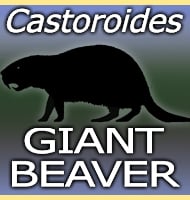Erlianomys
In Depth Erlianomys is a genus of myodont rodent that lived in Mongolia during the Eocene. Further Reading - Erlianomys combinatus, a primitive myodont rodent from the Eocene Arshanto Formation, Nuhetingboerhe, Nei Mongol, China. - Vertebrata PalAsiatica 48 (2): 133–144. - Q. Li & J. Meng - 2010.
